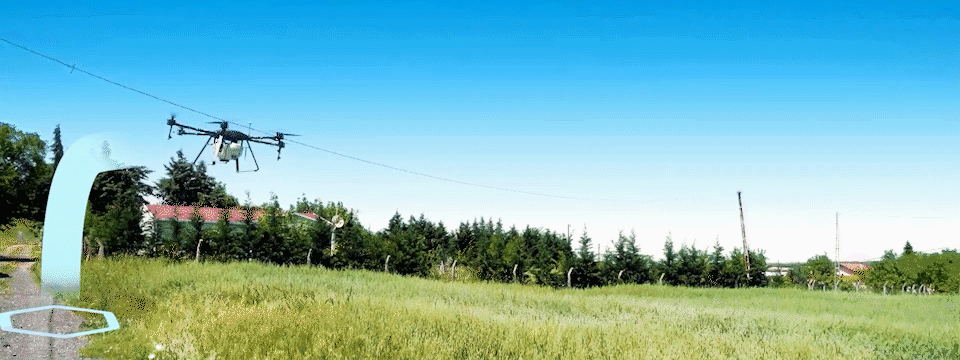
Agricultural spraying drones, also known as agricultural unmanned aerial vehicles (UAVs), are aircraft that are used to apply pesticides, herbicides, and fertilizers to crops. These drones are equipped with specialized spray nozzles or dispensers that release the agricultural chemicals in a controlled manner, allowing farmers to apply the chemicals accurately and efficiently to their crops.
The use of agricultural spraying drones has become increasingly popular in recent years due to their ability to cover large areas of land quickly and accurately, as well as the potential cost and labor savings they offer compared to traditional methods of agricultural spraying.
Agricultural spraying drones typically have a wingspan of several meters and weigh more than 20 kilograms -varies according to their tank capacity. They are equipped with a variety of sensors and navigation systems, including GPS, gyroscopes, accelerometers, and radars, which allow them to fly autonomously and follow predetermined flight paths. Some drones also have cameras or other sensors that can be used to gather data about the crops, such as crop health or pest infestations.
To begin a spraying operation, the farmer first prepares the chemical solution and loads it into the drone’s spray tanks. The drone is then launched from a designated takeoff area and follows a pre-programmed flight path, using its sensors and navigation systems to avoid obstacles and maintain a stable flight. As the drone flies over the crops, it releases the chemical solution in a controlled manner, applying it evenly and accurately to the desired areas.
One of the major advantages of agricultural spraying drones is their ability to cover large areas of land quickly and efficiently. Traditional methods of agricultural spraying, such as using tractors or hand-held sprayers, can be time-consuming and labor-intensive, and may not be able to reach certain areas of the field due to obstacles or uneven terrain. Drones, on the other hand, can cover large areas in a short amount of time, and can easily navigate around obstacles and uneven terrain.
Another advantage of agricultural spraying drones is their ability to apply chemicals more accurately and with less waste. Traditional methods of spraying often result in overspray, where the chemical solution is applied to areas that are not intended to be treated. This can result in the loss of valuable chemicals, as well as potential environmental damage. Drones, on the other hand, can apply chemicals more accurately and with less overspray, resulting in more efficient use of the chemicals and less potential for environmental damage.
There are also potential cost and labor savings associated with the use of agricultural spraying drones. Using a drone for spraying can potentially reduce the need for labor, as the drone can be operated by a single person rather than a team of workers. In addition, the cost of using a drone for spraying may be lower than the cost of using traditional methods, as drones do not require fuel or maintenance in the same way that tractors or other machinery do.
Despite the many advantages of agricultural spraying drones, there are also some challenges and limitations to their use. One of the main challenges is the need for trained operators to fly the drones and maintain them. In addition, the use of agricultural spraying drones is regulated by aviation authorities, and operators must have the necessary licenses and permits in order to use them. There are also potential safety concerns associated with the use of drones, as they may pose a risk to people and animals if they collide or malfunction.
Overall, agricultural spraying drones offer a number of benefits to farmers, including the ability to cover large areas quickly and accurately, reduced overspray and chemical waste, and potential cost and labor savings. While there are challenges and limitations to their use, these drones have the potential to revolutionize the way that agricultural chemicals are applied and improve the efficiency and sustainability of modern farming practices.
